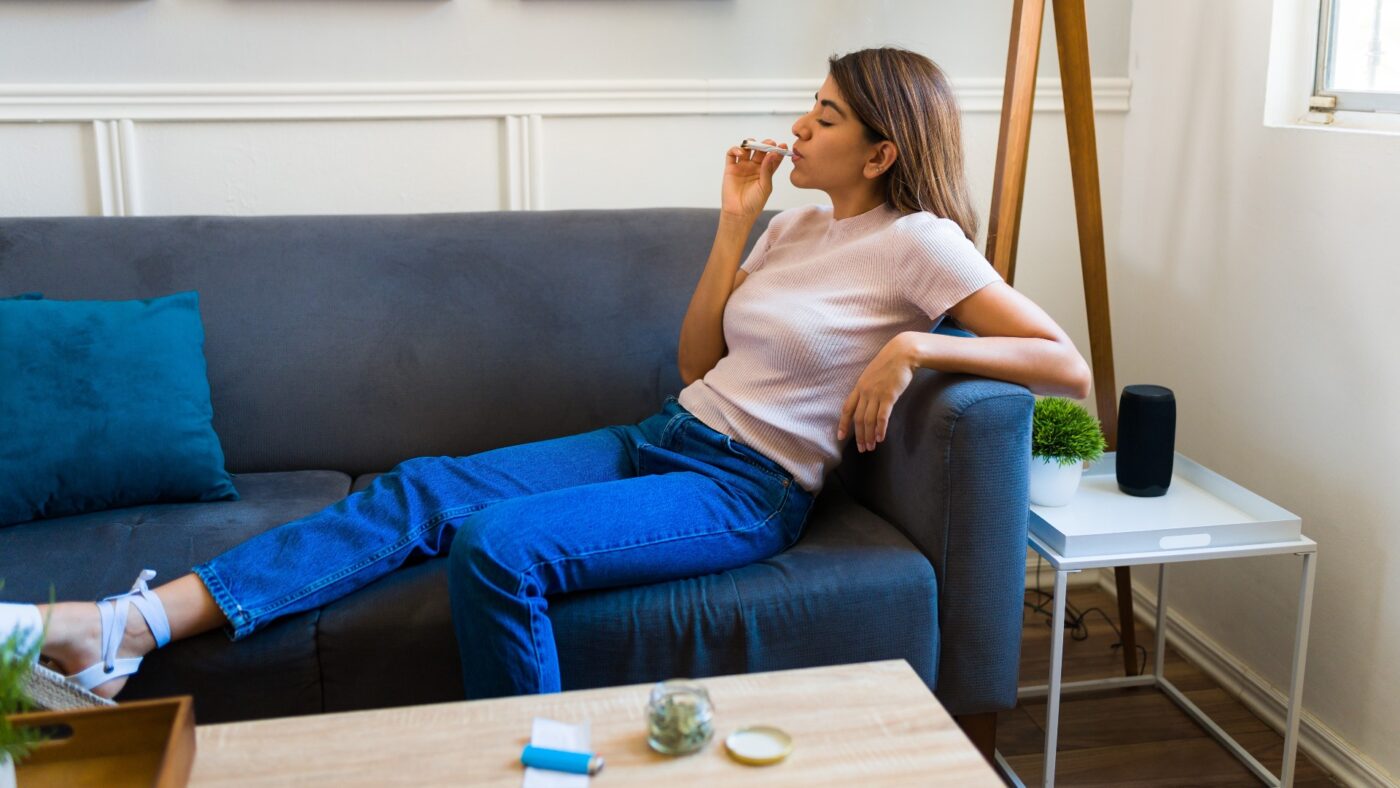LIFESTYLE
What is Couchlock and Why is it Associated with Indicas?
We are here to explain this strange phenomenon(Couchlock) that cannabis provides.

Many people use marijuana to energize themselves or help with their work or art. Many use it to help themselves relax or sleep. Sometimes, it results in an unintended effect: a heavy feeling in the muscles that makes people not want to get up once they’ve settled in to relax. In some cases, that feeling known as “couchlock” can be very difficult to overcome.
What is Couchlock?
The term “stoned” has been used since the 1920s. People used to say it to refer to being drunk, because drinking too much can make people look disheveled, as though they’d been stoned in the biblical sense – as in, pelted by stones. In 1953, the Oxford English Dictionary included the word to refer to drug use. In the 1960s, the shift for the term referring to weed rather than alcohol became solidified, referencing the feelings of lethargy that make it hard to get up from a position sitting or lying down – cannabis can make people feel heavy, like a stone.
That feeling isn’t interchangeable with being high. Being “high” can be an energetic feeling, stimulating creativity and joy, and motivating people to be more active in some cases. Clearly that’s very far away from the sedated, sleepy, immobile feeling of being stoned.

Couchlock is a common cannabis term used for the effect when you feel too heavy to leave the couch. photo credit
Another term for that heavy-limbed, glued-down feeling is “Couchlock.” It’s the same principle – you get so high, you can’t get off the couch.
Why Indicas Are More Likely to Result in Couchlock
Although couchlock is associated with indicas, the phenomenon can be sparked by sativas as well. Indicas as a whole tend to induce a “body high” while sativas are headier, but either one has the potential to make you feel stoned. The experience is caused by the terpenes within cannabis. The main culprit for couchlock is the terpene Myrcene, which is typically found in higher quantities in indicas.
Myrcene is known for relaxing muscles, serving as an anti-inflammatory, and protecting the gastrointestinal system. And, it’s scientifically proven to make people sleepy.

Couchlock has also been correlated to the terpene, myrcene. photo credit
A study published in the National Library of Medicine under the National Center for Biotechnology Information found that giving mice myrcene increased the lengths of time they would sleep by 2.6 times.
“Our study showed that citral, limonene and myrcene presented sedative as well as motor relaxant effects. Although only at the highest dose, they also produced a potentiation of the pentobarbital-induced sleeping time in mice, which was more intense in the presence of citral. In addition, neither of them showed an anxiolytic effect, but rather a slight anxiogenic type of effect at the higher doses,” the researchers wrote.
There’s another chemical element to blame for couchlock: CBN. That cannabinoid doesn’t have psychoactive effects, but does serve as a sedative. Some edibles and tinctures are specifically formulated to isolate and include higher doses of CBN in people looking to take marijuana as a sleep medication. Sleep Hill Labs found 5mg of CBN has the same effect as 10mg of the sleeping pill Diazepam, which is also used to treat anxiety, seizures, and spasms.
What Strains are Most Associated with Couchlock?
Highly potent indicas are most likely to result in couchlock. If you’re looking to chill out all day and barely move, the following are going to be your best bet to help with that.
Couchlock Indicas
Can This be Avoided?
Couchlock can come about unexpectedly. Many people think it’s a result of ingesting too much THC, but that isn’t always the case. Each person’s DNA, cannabinoid receptors, eating habits, hydration, and more can contribute to the likelihood of them experiencing couchlock.
Couchlock affects everyone differently. photo credit
Of course, the strain and the amount of it consumed are going to play the biggest roles, but the other factors matter – a strain that gives one person couchlock might not have the same effect on someone else, and a person who didn’t experience couchlock while ingesting a particular strain may go through it the next time they use the same strain.
So What Is There to Do?
It’s important to note, couchlock isn’t necessarily bad. Some people are looking to relax, and the feeling is certainly indicative of ultimate relaxation. But others don’t like the feeling at all or find themselves in situations where they want to be up and about rather than in a couch-potato phase.
Avoiding certain strains that are known to be high in myrcene and CBN is a good start to try to keep from getting couchlock. However, we know other terpenes contribute to that effect, and weed hits people differently regardless. If you do feel couchlock setting in, there are actions you can take to nip it in the bud.

Coffee can sometimes brush off couchlock. photo credit
First, if you suspect you could be in for couchlock, get up the moment you feel it setting in and make yourself some coffee. The simple act of standing up can make a huge difference, and the caffeine can encourage you to stay up and moving.
A big meal can make a difference too. Having food and resting for 20 minutes or so could cure you of your couchlock.
One tip is to simply refuse to let the feeling of couchlock consume you. Convincing yourself to get up and stretch or move around a bit, perhaps doing some jumping jacks or yoga can get you out of the trance-like state of being stoned. Getting the blood flowing can make a huge difference.
Splashing water in your face is also a nice trick – the cold water can help snap you awake, cooling down your face and awakening your senses.
CBD can also help, balancing out some of the psychotropic impacts of the THC and helping you to have a better handle on your body.

Some people simply embrace couchlock and enjoy the heavy body high. photo credit
And some people find simply accepting the couchlock and leaning into it for a few minutes can cure them of the feeling of being overwhelmed by it, allowing them to regain a sense of control so they can overcome the feeling. Others simply decide to embrace the sensation and run with it, accepting the relaxation rather than trying to get up and moving.
